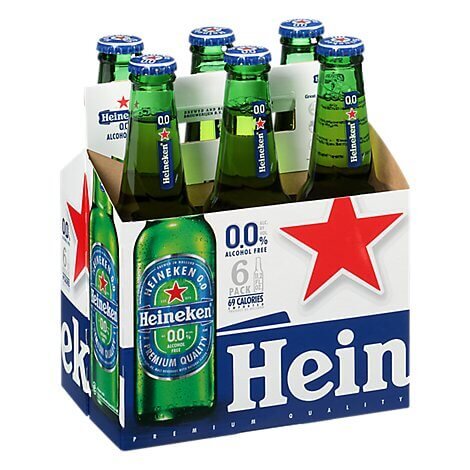What Does “Non-Alcoholic” Actually Mean & Why Does .5% Matter?
Now that there are more than 120 brands of non-alcoholic spirits on the market globally, it’s possible to divide these beverages into subcategories. Some are meant to mimic base spirits or liqueurs like tequila and amaretto, while others are marketed as botanical non-alcoholic spirits that are not copies of existing categories. In production, some of these non-alcoholic spirits are distilled, while others are closer to flavored water with additives and preservatives. In terms of flavor, some mimic the burn of alcohol by including capsaicin, ginger, and other spicy ingredients, while others are more fruity or floral to stand out aromatically.
And importantly for the purposes of this discussion, some of these non-alcoholic spirits use alcohol in their production or allow for fermentation, while others avoid alcohol altogether. Further, the marketers of these brands use different terminology to distinguish the extent of the involvement of alcohol in production, despite all being legally non-alcoholic.
The United States and many other countries define non-alcoholic beverages as containing less than .5 percent alcohol by volume. The various spirit-like products in this category are labeled with terminology including “non-alcoholic spirit,” “alcohol-free distillate,” “alcohol-free spirits,” "zero proof," "0.0 spirit," "no alcohol gin," “spirit of gin,” “plant-based alcohol alternative,” and other descriptors to indicate what’s in the bottle.
The .5 Solution
The .5 percent ABV of non-alcoholic products is extremely low. To consume the amount of alcohol in a single five percent ABV beer, you’d have to drink ten .5 percent non-alcoholic ones. As about two cans of beer fit into a 700ml bottle of non-alcoholic spirit, by my calculation, you’d need to consume five bottles of a non-alcoholic spirit in order to get the impact of one beer.
And yet, to many consumers, that .5 percent is quite important. Some people with alcohol use disorder avoid products like vinegar, mustard, orange juice, and other food and beverage products that contain trace amounts of alcohol. Others may not want even the faintest association with alcohol. On the FAQ page of Ritual Zero Proof’s website, to the question of “I’m in recovery. Can I drink this?” The brand responds, “That’s a very personal decision. Ritual is not a spirit with the alcohol removed. However, we worked as hard as we could to make these resemble traditional spirits. Everyone has their own recovery process, and literally, the last thing we would want is for our product to serve as a trigger.”
Less than Zero?
Other consumers may avoid all trace alcohol for religious reasons: If alcohol is used in the production of a product, even if it is fully removed afterward, it may not be considered halal, or permissible, to practicing Muslims. When Heineken launched its non-alcoholic 0.0 beer in Malaysia, the brand clarified that though it was non-alcoholic, it was still not halal.
Despite the several parties who may be interested in creating one, there does not appear to be a common term for never-touched alcohol products. “0.0” may seem definitive, but in reality, brands use the term differently. According to Heineken’s website, “Heineken 0.0 contains less than 0.03% alcohol so as such it is a non-alcohol beer.” So it contains less than 0.0 percent, but there is still a minuscule bit of alcohol.
Whereas Dave Hall, Head Distiller at Conker Spirit and maker of Bowser Leaf “0.0% Spirit” says, “There is no alcohol used at any stage in the production of Bowser. We felt it was important that we didn't use alcohol to produce a non-alcoholic product.” Though it’s on the label, Hall indicated that he’d prefer not to use the word “spirit” at all, “We don't like to call it a 0% spirit as we feel it can be slightly misleading, we prefer to call it a non-alcoholic, botanical drink.”
Damrak 0.0 photo credit Kirsten Van Santen
Like a Virgin
Tanya Cohn, USA & Canada Brand Manager of Damrak Gin, says that the “Damrak Virgin name was a fun, cheeky solution to extend the brand. We added 0.0 to the label to add clarity for the consumers and avoid any mistaken purchases, as at the time when we were developing the label, and in many cases to this day, the non-alcoholic spirits category is still undefined in shelf sets at liquor stores. Damrak Virgin production does not involve alcohol from start to finish. It is possible for natural fermentation to happen [during production], however, we do guarantee that at all times percentage of alcohol in Damrak Virgin will not exceed [that of] orange juice.”
And according to Nick Nemeth, Creator of Novara Bitter Aperitivo that is labelled as “non-alcoholic” and “0% alc/vol” says, “No alcohol was involved at any point. I've heard that technically the most accurate descriptor in this case would be ‘alcohol free’ instead of ‘non-alcoholic,’ but I'm slightly foggy on all that to be honest.”
One Australian non-alcoholic beverage retailer, Alcofree, would seem to agree with that assessment. The website divides non-alcoholic products into subcategories. They note in their FAQ that “Alcohol-free beverages are produced without any form of fermentation,” while “non-alcoholic” drink “contains 0.5% or less alcohol by volume.”
Perhaps, in the near future, consensus will form around “alcohol free” or another term to describe these products that have never touched alcohol. In the meantime, people who want to keep things below that .5 percent will have to do a little digging through the FAQ pages of brand websites.





